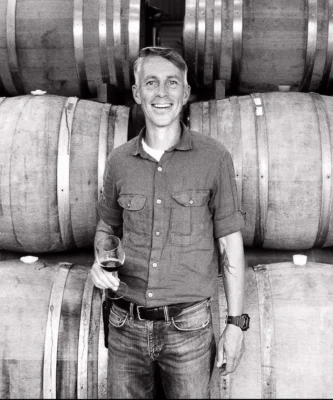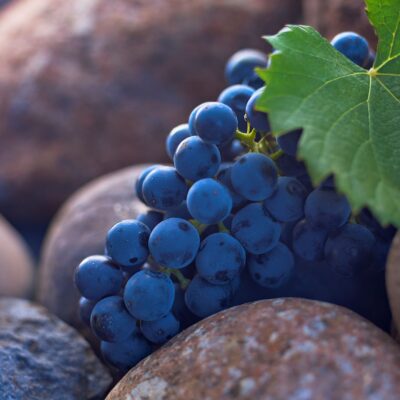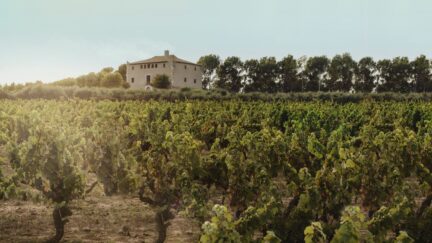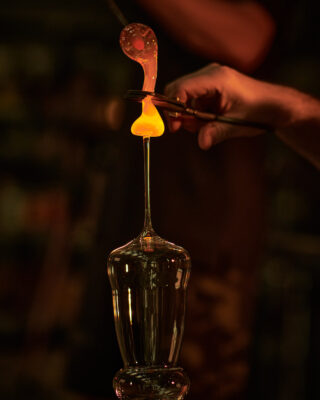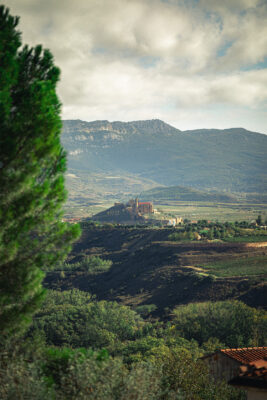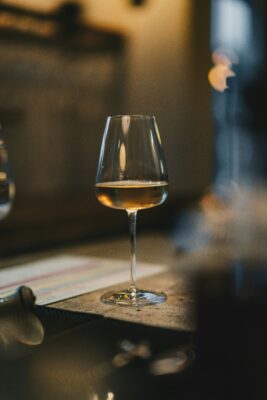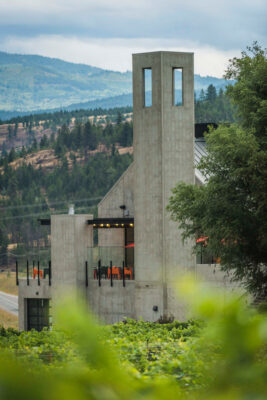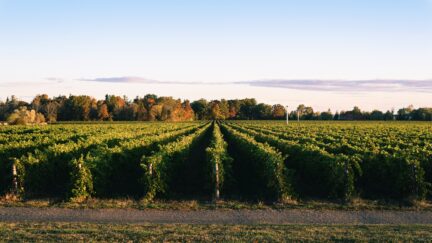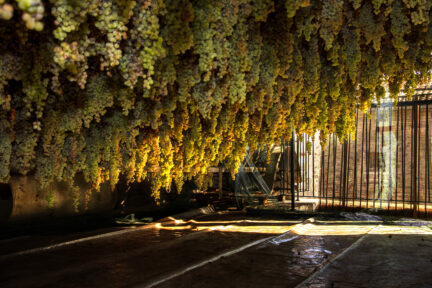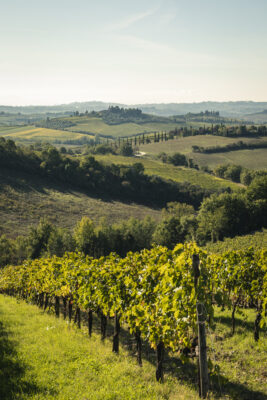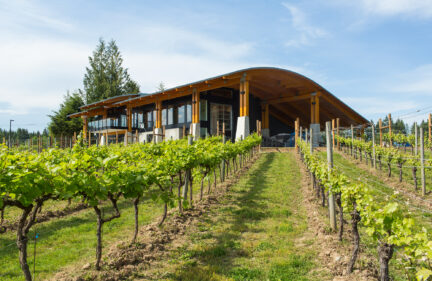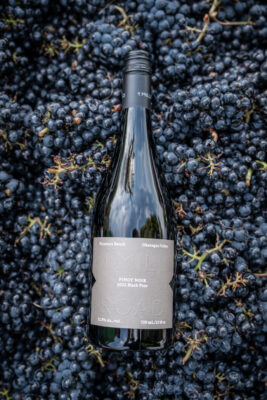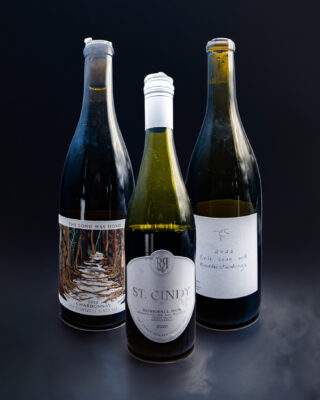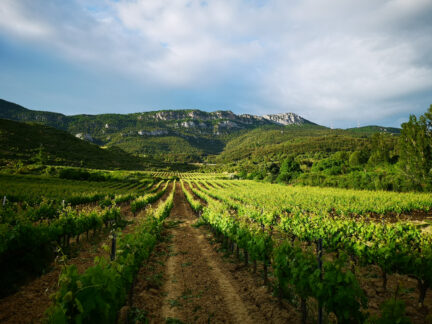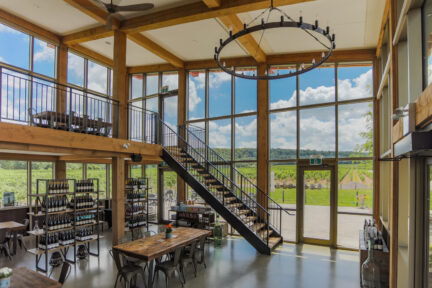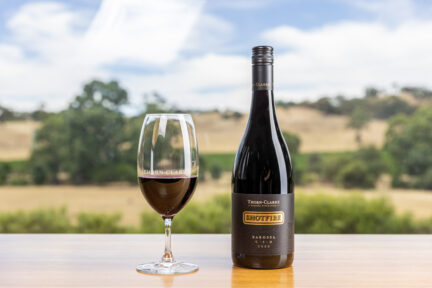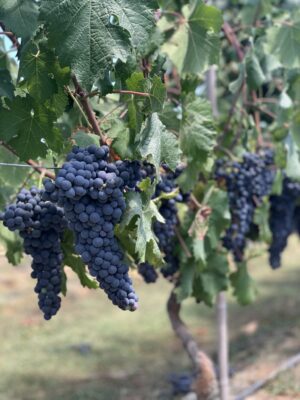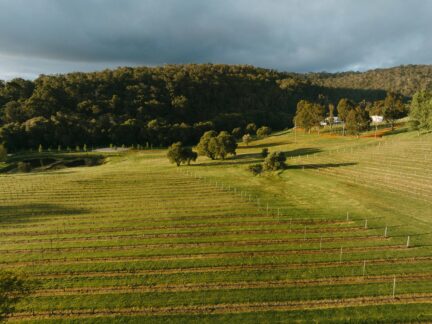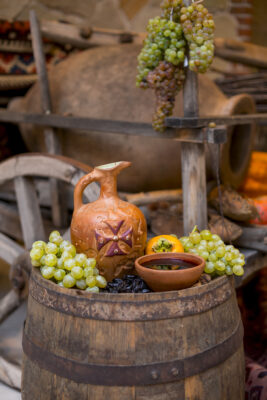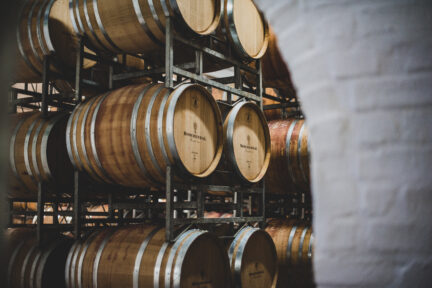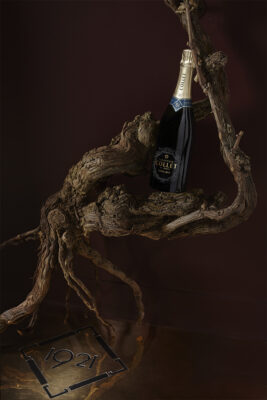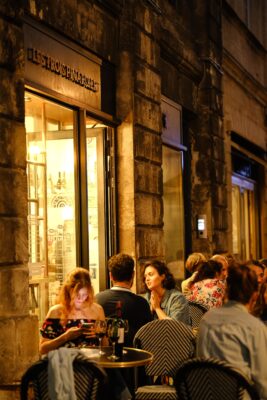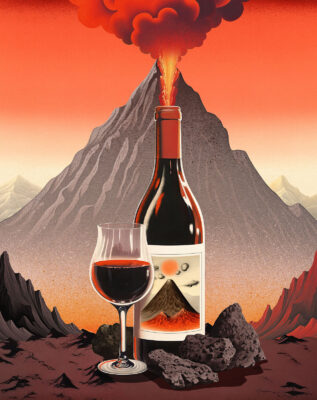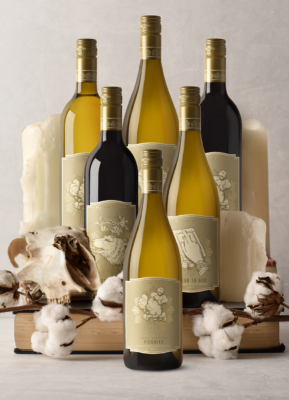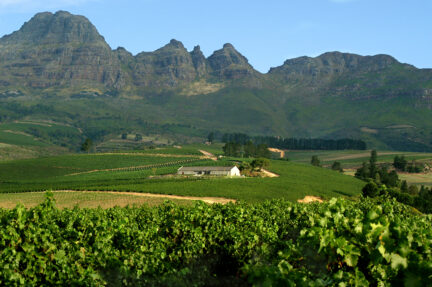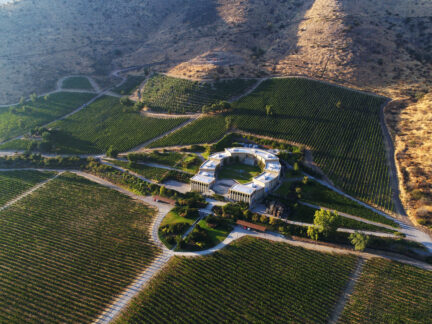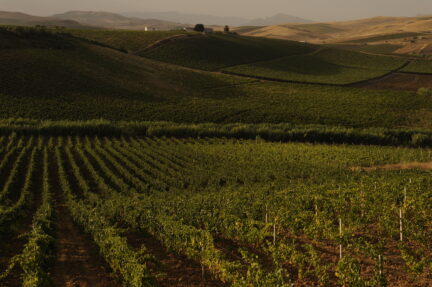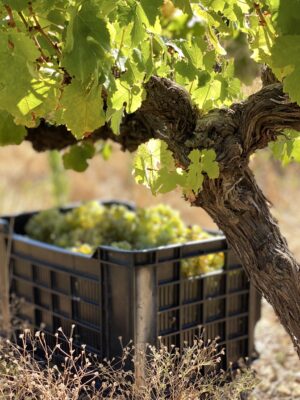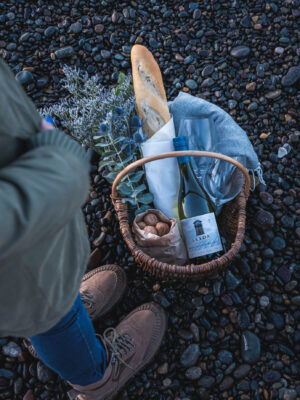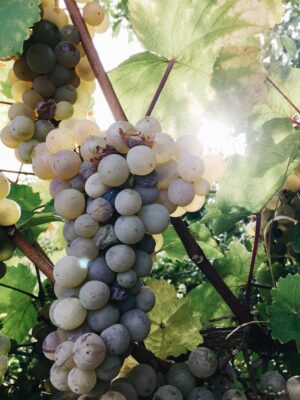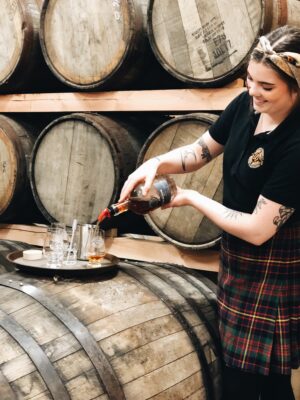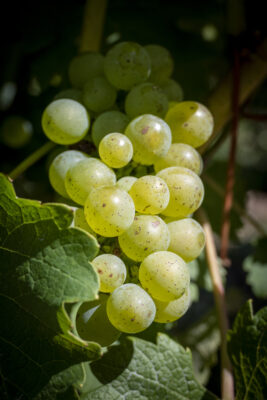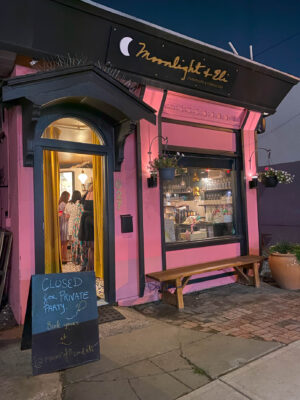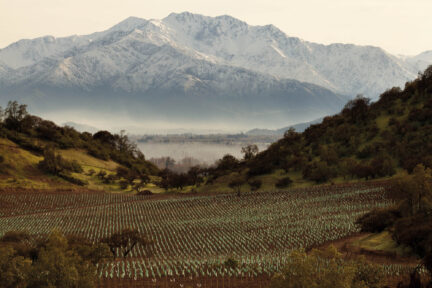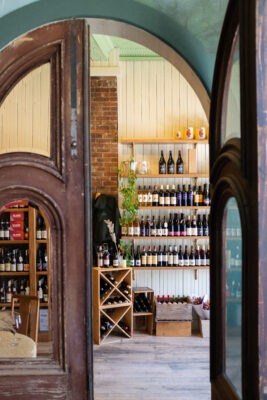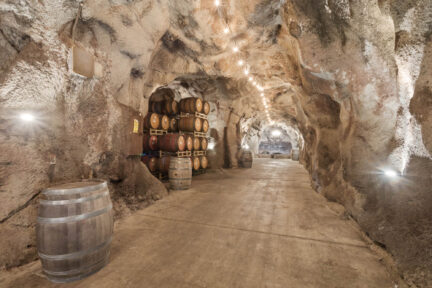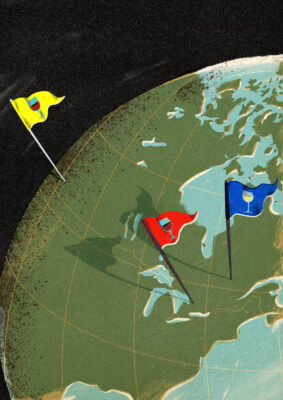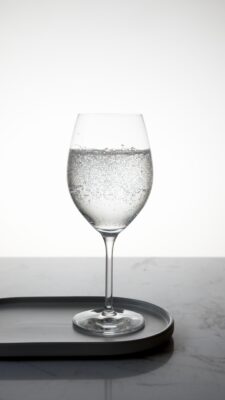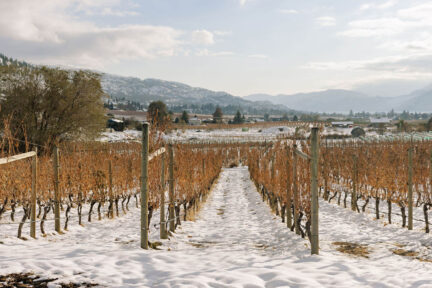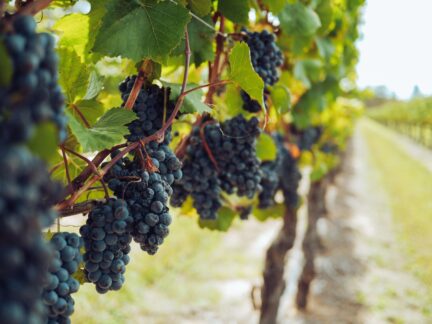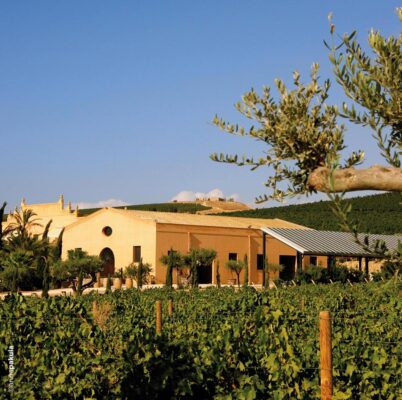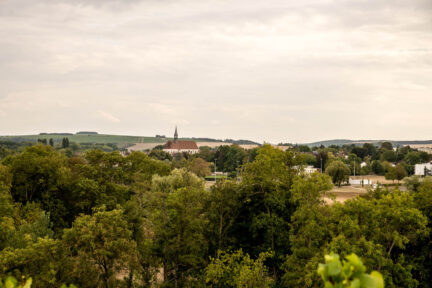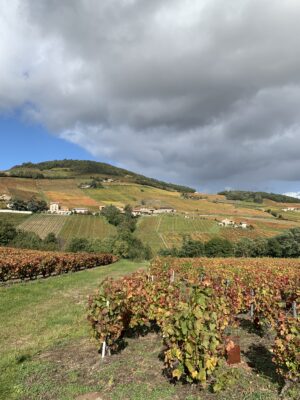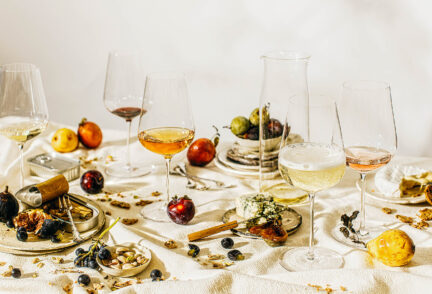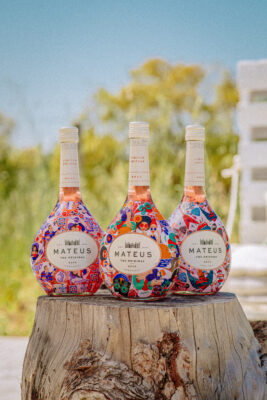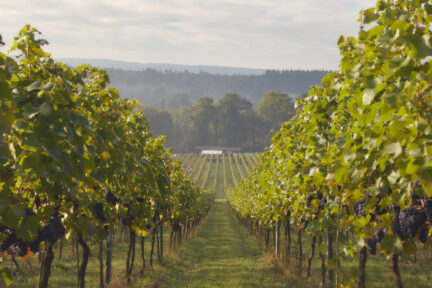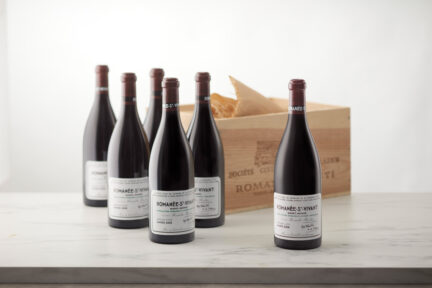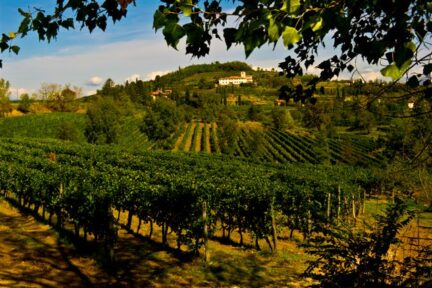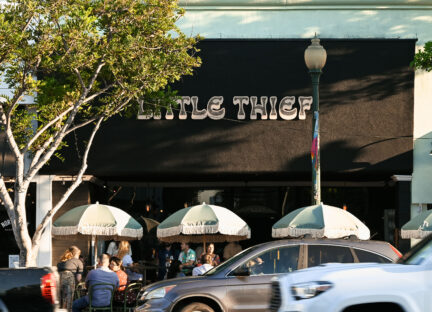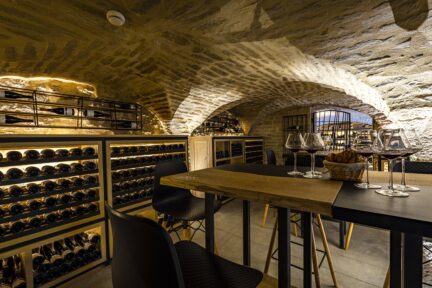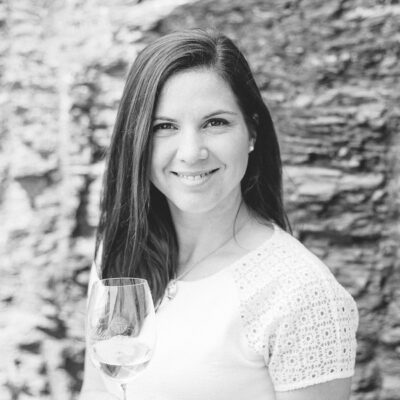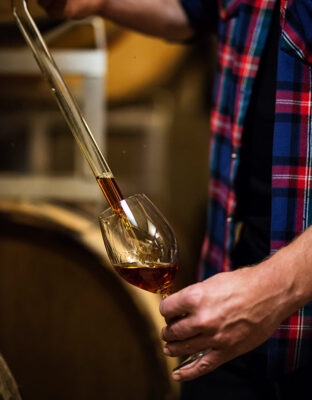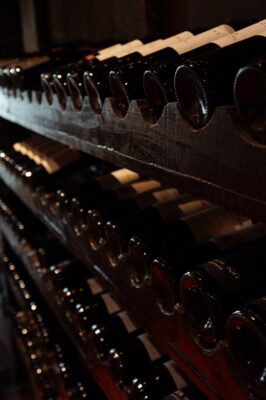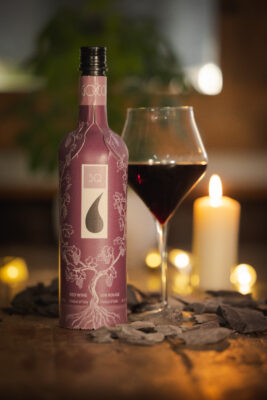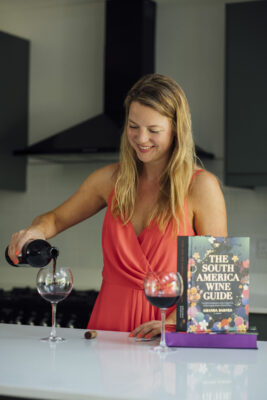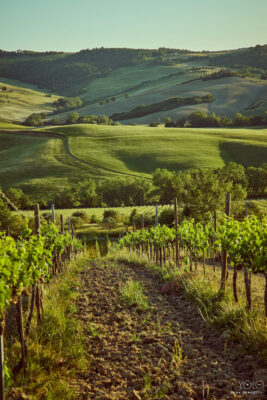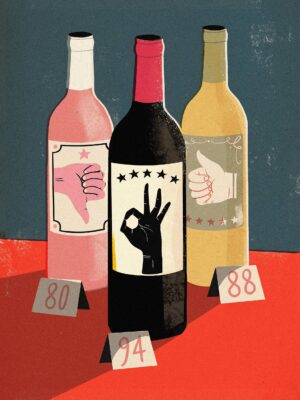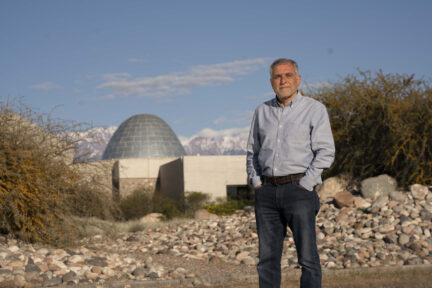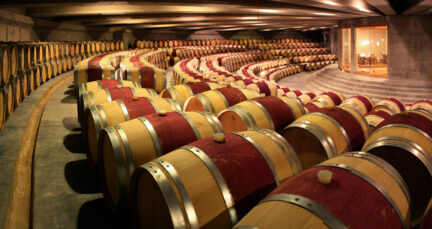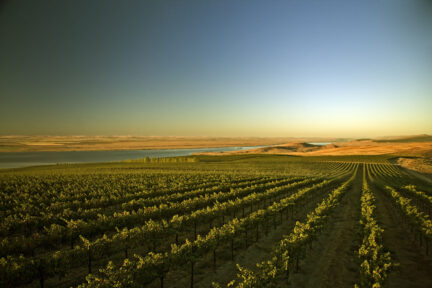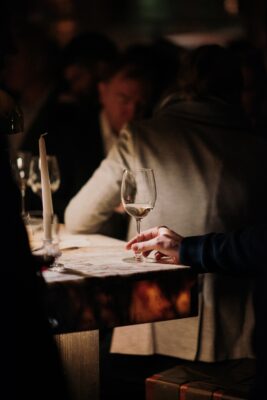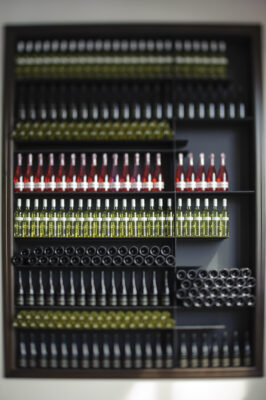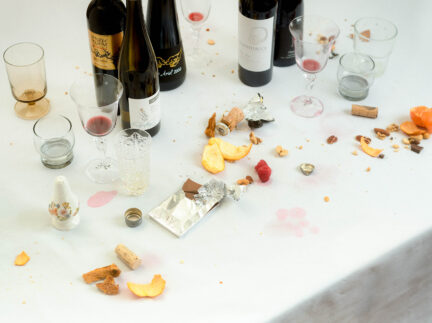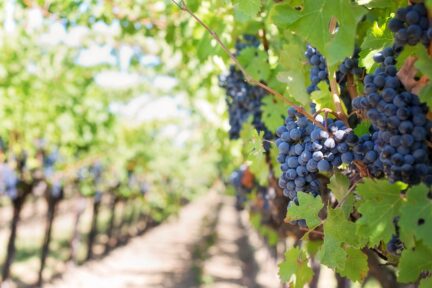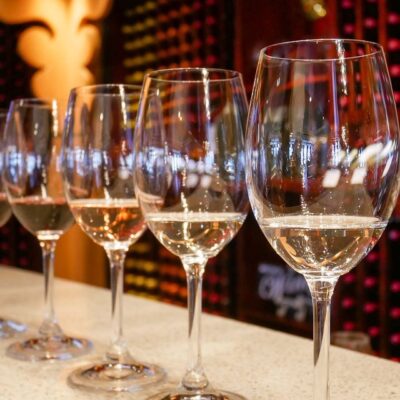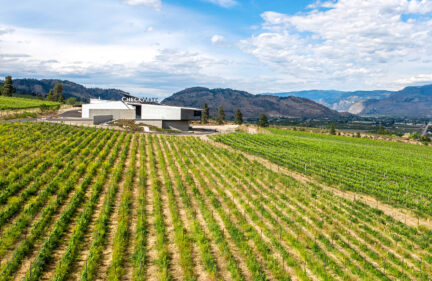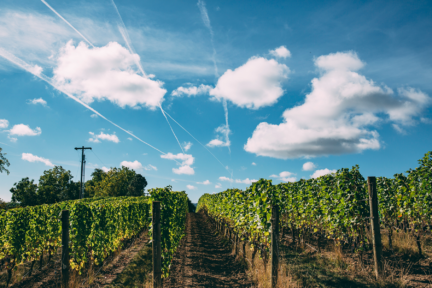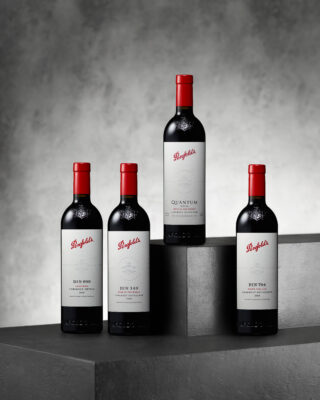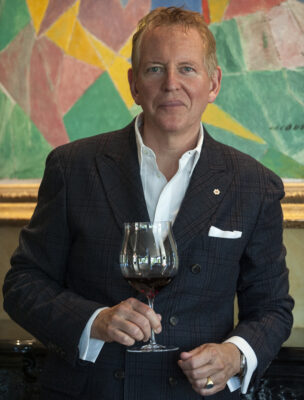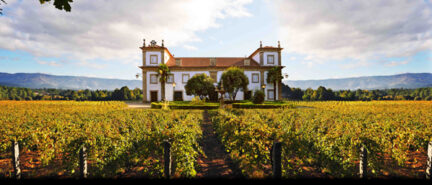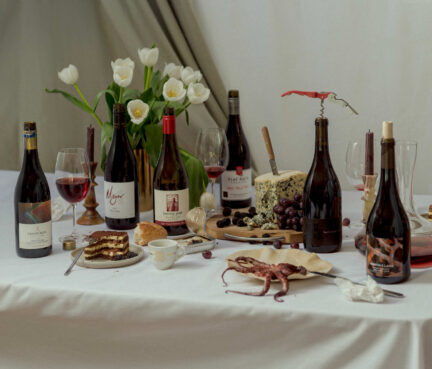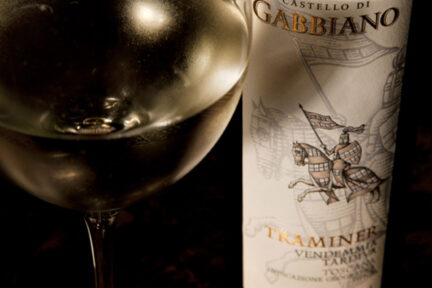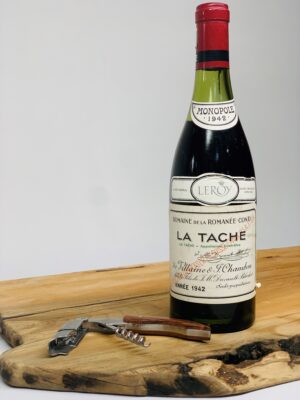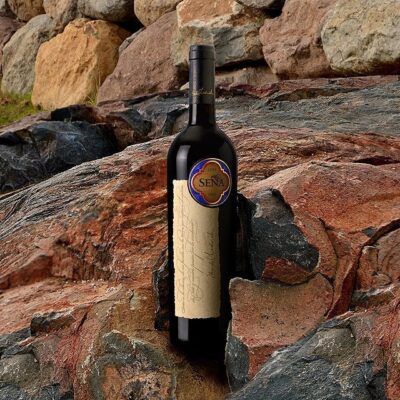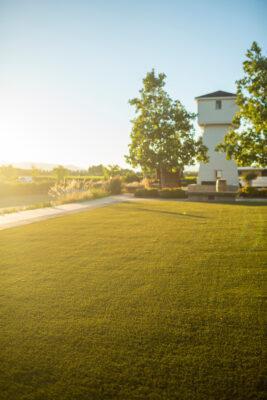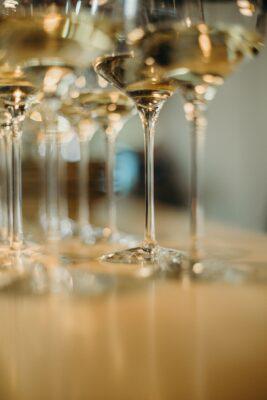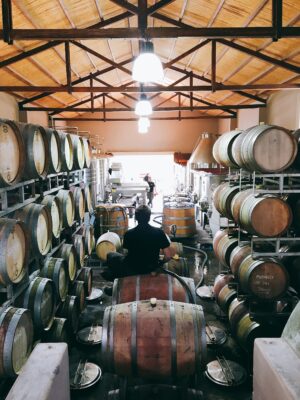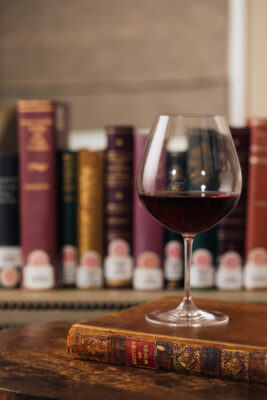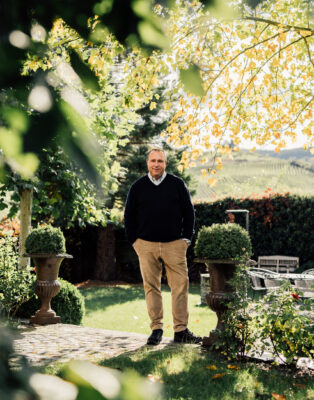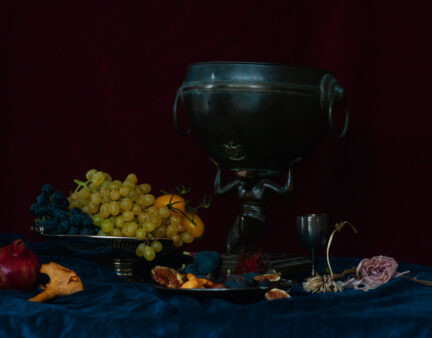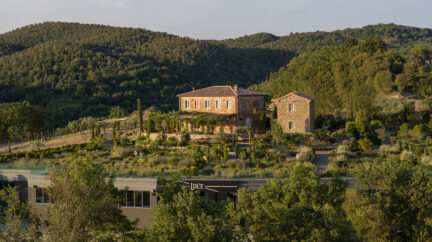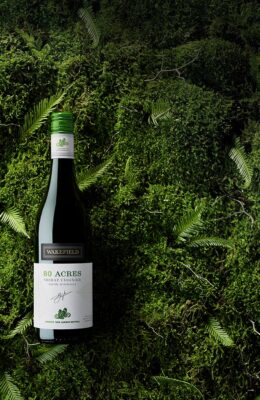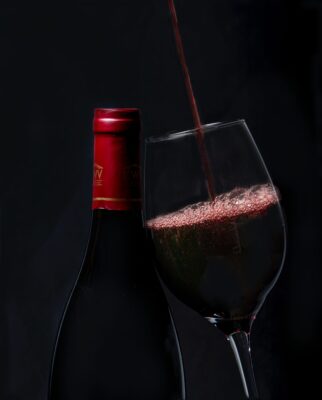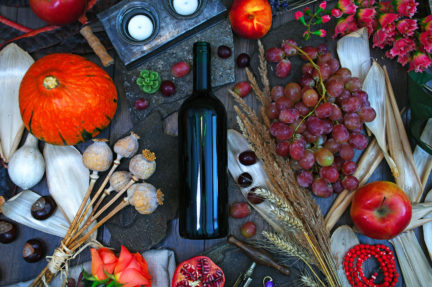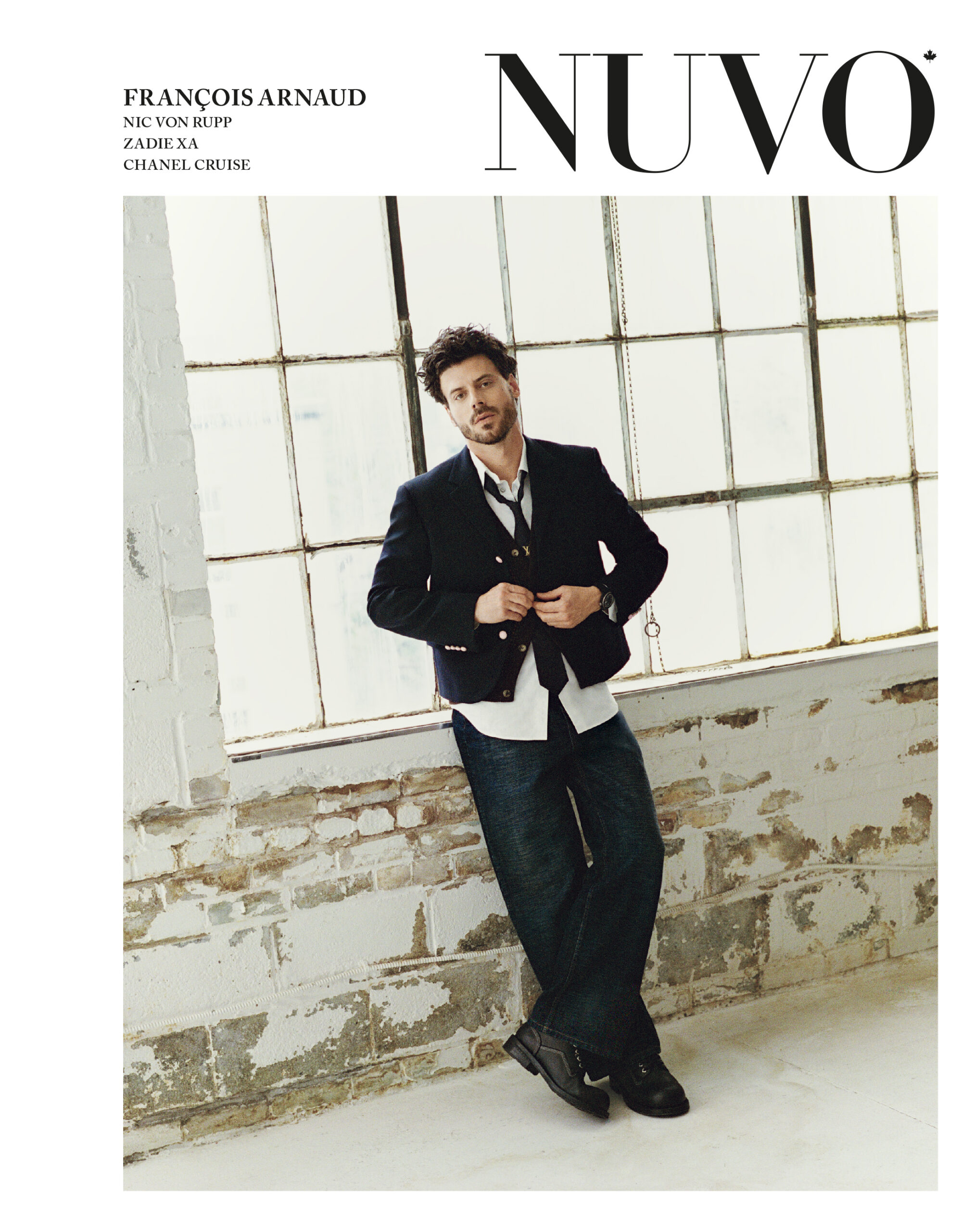A specialist in chardonnay and pinot noir.
Rod Phillips
Quebec Wines Are Beginning to Hit Their Stride
The wineries of Montérégie, an easy drive from Montreal.
From Vision to Spectacular Realization
Lake Country’s 50th Parallel Estate Winery.
Raising the Bar for Ontario Premium Wines
Dobbin Estate launches fine whites and reds.
From Canada to Argentina
A winemaking power couple and their fine malbecs.
Working for Earth-Friendly Wine, Two Worlds at a Time
Familia Torres achieves sustainability in Spain, Chile, and California.
New Wine Glasses With a Kink
The latest take on wine glasses is the Josephine Collection from the Josephinenhütte glassworks, renowned for their unique shape.
Not Just Your Parents’ Rioja
The broad range of styles from Spain’s iconic wine region.
From an Abandoned Vineyard to Fine Wines
Leaning Post Wines is consistently ranked among Niagara’s best wineries, and its small-lot wines are gaining high scores at home and abroad.
In Defence of Chardonnay
Not only is chardonnay the world’s most planted white wine grape variety, it easily outranks the next two: sauvignon blanc and trebbiano.
Italian Wines With Alpine Attitude
Alto Adige, Italy’s northernmost wine region and one of its smallest, has quickly become known for its stunning wines.
Monte Creek Winery in the Thompson Valley
The largest of the valley’s three wineries is Monte Creek, which has vineyards on both sides of the South Thompson River.
Ontario’s Star Hybrid Wine Grape Variety
What is it about baco noir? In the right growing conditions and winemaking hands, it makes quite intense wines that deliver red- and dark-fruit flavours with top notes of spiciness.
A Commitment to Italy’s Indigenous Grape Varieties
Davide Vignato is so committed to his locality that almost all his wine is made from only two indigenous grape varieties.
100 Years of Improving Wine Quality
This year marks the 100th anniversary of Italy’s oldest regional wine association, the Consorzio Vino Chianti Classico, the first of the consorzios that regulate the production of wine in each of Italy’s scores of wine appellations.
Vancouver Island Wines Are in the Spotlight
Vancouver Island has plenty to offer wine lovers.
From Corporate to Artisan Winemaker
Bryant was the vice-president of winemaking at Mission Hill Family Estate Winery before co-owning 1 Mill Road winery.
Burgundy or Bourgogne?
Wine authorities in Burgundy, France, have been asking us to refer to it not as Burgundy but as Bourgogne—its name in French.
The Largest Showcase of Canadian Wine
Canada’s Great Kitchen Party is an annual series of culinary and wine events, raising funds for various charities.
The Fine Wines of Rioja’s Bodegas Puelles
Bodegas Puelles focuses on wines that carry the Rioja name, although it also makes some popular wines with no regional designation.
Niagara’s Cave Spring Winery Continues to Maintain a High Bar
Cave Spring Vineyards is one of Niagara Peninsula’s oldest wineries, but it has never lost the drive to innovate.
A Winning Merger of Gold and Wine: Barossa Valley’s Thorn-Clarke Winery
Thorn-Clarke wines is the result of a marriage between families of grape growers and gold miners in South Australia.
The Ongoing Story of Chile’s Signature Wine
Many examples of Chile’s signature red wine, carmenère, are appreciated for their richness, complexity, structure, and balance–the culmination of decades of dedicated work in Chile’s vineyards and cellars.
Preventing the Disappearance of Australian Wine
Ampersand Estates has launched a campaign to draw attention to the effects of climate change on wine with its “Tomorrow’s Vintage” campaign.
New Wines From the World’s Oldest Wine Region, Georgia
Georgia can claim the earliest-known wine production from the discovery of 8,000-year-old pottery jars that once held wine.
Boschendal Wine Estate
Boschendal Wine Estate, South Africa’s second-oldest winery, offers a first-class experience with wine tastings in it’s historic manor house.
Champagne Collet
While smaller than some of the region’s big name producers, Champagne Collet is a consistent and reliable player in the world of champagne.
The Two Best Wine Bars in Bordeaux
Two wine bars, both in the city centre, stand out for their Bordeaux offerings, and they are very different from each other.
Get All Fired Up With Volcanic Wines
Produced from grapevines growing in the rocks and ash deposited by volcanic activity, Volcanic wines erupted onto the world’s wine landscape.
Blasted Church’s Divine Wines
Blasted Church Winery was founded about 20 years ago and it has gained a reputation (and many awards) for the quality of its wines.
South Africa’s Distinguished Wines
The prevalence of inexpensive South African wines on the market too often leads consumers to overlook the higher-quality wines.
Chile’s Horse-Inspired Winery
Aficionados of horses and wine can find a winery in Chile that satisfies both their passions: Haras de Pirque, meaning “Pirque stud farm.”
Sicily: More Than an Island of Wine
Sicily is a mountainous island, and many vineyards are planted at high altitudes to benefit from cooler conditions that promote acidity and produce fresh-tasting wines.
The Attraction of South Africa’s Old Vine Wines
South Africa’s pioneering Old Vine Project encourages owners of the country’s oldest vines to keep them in the ground and continue to make wine from them.
The Elegant Wines of Viña Leyda
The cold ocean current and the cool onshore breezes might not invite swimming, but they provide a perfect canvas for Viviana Navarrete to fashion elegant pinot noirs and other wines.
Lailey Winery’s Remarkable Stonebridge Sauvignon Blanc Reserve 2020
Wine producers constantly stress the need for high-quality grapes to make excellent wines. Yet one of the most extraordinary and delicious wines made in Ontario in the last few years originated in a vineyard that had been abandoned for the season because the grapes were ruined by birds, fruit flies, and rot.
Winning Whiskies from Vancouver Island
Macaloney’s Island Distillery, in Saanich on Vancouver Island, has been cleaning up in international whisky competitions.
Not Your Average Marlborough Sauvignon Blanc
Loire Valley sauvignon blancs are unlike their British Columbia, California, and southern hemisphere counterparts. All have similar components, but they are put together very differently.
Tuscany’s Bindi Sergardi Winery
It’s often said, more romantically than in any scientific sense, that wines express the place they come from. In a cultural sense, this is strikingly true of the wines of Bindi Sergardi.
Calgary’s Champagne and Fondue Bars
When Mhairi (pronounced Vari) O’Donnell sat down with her mother more than a decade ago to look through old black-and-white photos of her grandmother, she had no idea it would lead to her opening what are possibly the world’s only champagne and fondue bars.
The Chilean Winery That Disrupted Itself
Wineries generally replace aging or underperforming grapevines gradually—parcel by parcel, or vineyard by vineyard—to minimize disruption to production. But Chile’s Santa Rita winery takes a radical approach.
Changing Climate and Changing Wine
Would you like your glass of bordeaux to be a blend of cabernet sauvignon and merlot—but with a little touriga nacional and marselan? This is likely to be the future—and the not-too-distant future—as wine producers galvanize to meet the challenges of climate change.
The Rise of Private Wine Stores
But some entrepreneurs saw an opportunity to open wine stores. If a bottle of wine could be sold with a meal, they reasoned, a bottle of wine could be sold with a bag of chips.
Gold and Wine in the Golden State
At California’s Ironstone Vineyards, there’s a glittering reminder of the origins of the state’s wine industry during the California Gold Rush.
Regional Wine Preferences in Canada
Do Quebec wine consumers really like more-acidic wines than their Ontario counterparts? What about British Columbians? It’s actually not simply a matter of acidity but of style generally: a wine’s weight or body, fruit-acid balance, sugar and alcohol levels, and tannins.
The Exciting World of Sparkling Wine
The world of sparkling wine is vast, varied, and vibrant. It’s no exaggeration to say that there’s a sparkling wine for most budgets and every occasion—whether it’s Wednesday, a new puppy, or a golden anniversary. Exploring it is an adventure well worth undertaking.
A Premium Wine Region Destined for Fame
Certified in only 2019 as a new wine sub-appellation in British Columbia’s Okanagan Valley, Naramata Bench has quickly established itself as a premium region.
Canadian Pinot Noirs With Cachet and Quality
Canadian pinot noir is well known to many wine aficionados, but in general it’s far too little appreciated. Who would have thought that it will soon become the most-planted wine grape variety in British Columbia?
Sicily’s Iconic Donnafugata Winery
The quality of its top wines, exemplified by Donnafugata’s range, means Sicily will soon take its place as one of Italy’s leading wine regions.
Chablis: Chardonnay’s Showpiece
Even the most hard-core ABCer–someone who drinks anything but chardonnay–will agree that the C doesn’t include Chablis, the source of some of the world’s most delicious chardonnays.
The Versatility and Depth of the Wines of Beaujolais
For decades, the wines of Beaujolais have been both flaunted before the wine-drinking public and kept such a low profile they were little known beyond a coterie of serious wine-lovers.
How Many Wine Glasses Do You Really Need?
The sheer proliferation of wine glasses, each dedicated to a specific variety or style, has itself probably been the undoing of that approach to glasses. How many wine glasses do you really need? The short and simple answer: one.
Celebrating 80 Years of Portugal’s Mateus Original Rosé
Mateus Rosé, the medium pink, lightly sparkling, off-dry, fruity, and oh-so-easy-drinking wine from Portugal, appealed not only to cultural and literal royalty, but also to millions of people around the world. It was the most-sold wine in the world in the 1970s, but it was no one-hit wonder: this year, Mateus celebrates its 80th anniversary, and it’s still going strong.
The Rapid Success of English Sparkling Wine
The combination of grape varieties and growing conditions in England results in sparkling wines that tend to show excellent flavour complexity and the high acidity expected of this style of wine. The generous bubbles stream in beads and are often tiny, a trait associated with fine sparkling wine.
Iron Gate’s Hybrid Online and In Person Wine Auction
Online wine auctions took off during the Covid pandemic, when it was impossible to gather for live events. Now that restrictions have eased, in-person auctions are back. But Iron Gate, a wine auction house based in Calgary, has put together a hybrid: a five-day online auction that will culminate in an in-person auction where online bidders can continue to participate.
The Wines Blending Innovation and History
Collavini brings together two apparently contradictory practices: making wines in pioneering styles and drawing on indigenous varieties that have grown in Friuli for centuries, perhaps millennia. Call it blending innovation with history.
How the French Revolution Was a Turning Point in French Wine
It’s very unlikely that Marie Antoinette told the French peasantry to eat cake when the grain crop failed in 1789 and left them without bread. But the revolutionaries who later toppled her and King Louis XVI were determined to provide France’s citizens with more than bread: ample supplies of affordable, good-quality wine. In doing so, they laid the foundations for the place of wine in French culture for years to come.
Little Thief Steals the Heart of San Diegan Wine-Lovers
A wine bar, surely, should be a drinking establishment where excellent wine leads the charge. The wine list needn’t have hundreds of bottles, but it should be smart and varied, with a decent range by the glass. And the wine should be served well: in good glasses, at the right temperature, and by informed servers.
The Jura Wines of Domaine Baud Génération 9
Domaine Baud Génération 9 is one of the go-ahead wineries, led by a younger generation, that is transforming the face of wine.
An Ontario Riesling That Rocks the World
One of Niagara’s most reliable wineries for almost two decades, Flat Rock is anything but resting on its reputation. It is experimenting with new styles, such as an orange wine made from riesling and gewürztraminer, as well as a new range of labels. They suggest an intrepid, forward-looking winery.
A New Base for Wine Tours of Burgundy
A successful pilgrimage demands good accommodation, and a wine pilgrimage is no exception. Burgundy is among the world’s most popular destinations for wine-lovers, and the opening of the newly renovated Hôtel du Palais, in the centre of Dijon, is well timed.
South Africa’s Winning Winemaker
In 2016, Andrea Mullineux was named International Winemaker of the Year by Wine Enthusiast magazine. In addition, she was invited to join the Cape Winemakers Guild, an exclusive group of 47 of the country’s top winemakers, recently serving as its chair.
The Rise of Celebrity Wine Brands
This is the Age of Wine. Should it be surprising that celebrities, like entrepreneurs everywhere, want to be part of it?
Ontario’s Rosewood Estates Reinvents Its Wines and Mead
Adding a single skin-fermented white wine (aka orange wine) or a low-intervention wine (often known as natural wine) to a portfolio of conventionally made wines has become common. But Ontario’s Rosewood Estates Winery has undergone a remarkable transformation by adopting low intervention production for almost all its wines.
Cava Sets New Standards In the World of Sparkling Wine
No longer considered a drink solely for special occasions, sparkling wine is now widely drunk on its own as a casual sipping wine, as an aperitif, and with meals. And although champagne might be the gold standard, it has plenty of competition.
Why You Should Be Wary of Wine Traditions
Tradition and traditional are powerful concepts in marketing wine and many other products. A commodity or service described as traditional is something that has been around for a long time and is so good that it hasn’t changed; it has survived intact because its quality has been endorsed by generations. Here’s why you should be skeptical of the terms.
The Latest Alternative to the Glass Wine Bottle
The latest alternative to the glass bottle is paper. Paper has two of the advantages of plastic and aluminum: it doesn’t shatter like glass, and it’s very light–the weight of a paper bottle of wine is essentially the weight of the contents.
The First English-Language Guide to South American Wine
The South America Wine Guide is the brainchild and product of the sheer hard work of Amanda Barnes, an English wine writer who has lived in Argentina for the last dozen years.
Tuscany Is About More than Chianti
Chianti is not Tuscany, and Tuscany is not Chianti. Chianti co-exists with other Tuscan wine regions that sometimes struggle to escape the shadow of their better-known sibling.
The Past, Present, and Future of the 100-Point Wine Rating System
The pleasure wine gives varies according to circumstances and mood, but many drinkers look for objective ratings when buying it. Reviewers all over the world rate wines out of 100 points, and many bottles carry stickers showing they scored 88, 90, or 93 points. But the 100-point system is not the only way wines are rated.
Meet the Pioneers Behind Modern Argentine Wine
Since the success of Fuzion, the Familia Zuccardi has gone from strength to strength. Zuccardi attributes some of the success to its being a family enterprise. The person behind this inspired wine was José Alberto Zuccardi, a second-generation winemaker whose father began planting vines in the Mendoza region of Argentina in the 1960s.
Wine Aging to the Sound of Gregorian Chants
Montes is not the only winery in the world to expose its maturing wine to music—some choose classical, others opt for jazz—but at Montes, it’s part of a more general orientation toward winemaking.
Washington, America’s Underappreciated and Surprisingly Diverse Wine Region
For the second-most-important wine-producing state in the United States, Washington is surprisingly little known internationally. Perhaps it’s because second is so far behind first: California.
A Guide to Drinking Local Wine in Halifax
One of the pleasures of travel is trying local or regional food and drink, including—perhaps especially—wines. Nova Scotia is home to about 20 wineries, and their wines are quite well represented on the city’s wine lists.
What Makes This Nova Scotian Sparkling Wine Specialist So Successful?
Two decades in, the foresight that judged this part of Nova Scotia ideal for making fine sparkling wines has borne fruit in more ways than one.
The Rich Diversity of Canada’s Top Wines
Many wineries, especially in New World regions, make what they call an icon wine. It is generally a limited-production red wine, the most expensive in a producer’s portfolio, and it sometimes comes in a bottle that’s heavier than the winery’s other bottles, as if to alert consumers to the wine’s gravitas.
The Most Persecuted Grape Variety in France Finds Success in Ontario
Few gamays achieve the status of fine wines, but many deliver terrific quality and have an avid following.
Orange, Skin-contact Wines Secure Their Place
Orange wines are polarizing; they are the Marmite of wine—not to everyone’s taste and quite off-putting to some people.
New Initiative Highlights Black Winemakers
Jazz pianist Steve Byfield is the only listed Black owner of a winery in Canada.
CheckMate Artisanal Winery Offers Remarkable Chardonnay and Merlot
CheckMate wines are made from only two varieties: chardonnay and merlot, an odd combination.
All You Need to Know About Oregon’s Pinot Noir
Pinot noir from the Willamette Valley established Oregon’s wine reputation by the 1990s, and ever since there have been the inevitable discussions about how it compares to pinot noir from Burgundy, considered the grape’s benchmark region.
Otherworldly Wines You Need to Try
For decades, many distinguished wineries have pitched their high-end wines as sourced from a single vineyard and even from selected parcels of vines from a particular vineyard. This has contributed to the mantra that their wines have a “sense of place,” already a hackneyed phrase in wine marketing. The thinking seems to be that the smaller the area grapes are sourced from, the better the wine they produce.
40 Years of Anthony von Mandl’s Ascendant Okanagan Wineries
At the age of 22, when many of his fellow graduates were debating whether to do a master’s degree or get a job, Anthony von Mandl bought a wine agency.
The New Generation of Refreshing Summer Wines From Portugal
The ability to age is one of the transformations taking place in vinho verde wines. Largely the work of a new generation of winemakers, a range of wines in a new style have been heading our way in the last few years.
The Many Styles of Canadian Pinot Noir
In Canada, the main pinot noir regions are Niagara Peninsula and Prince Edward County in Ontario and Okanagan Valley in British Columbia, but there are plantings elsewhere in those provinces as well as in Nova Scotia and Quebec.
Chianti, as Classic as Classic Wine Can Be
Chianti has been Italy’s best-known wine for many decades.
Australian Winery Wolf Blass Is Now Red Producer of the Year
When Australian wines raced to world markets in a serious way in the 1990s, one of the first brands out of the gate was Wolf Blass.
Exploring Online Canadian Wine Auctions
With the disappearance of in-person wine auctions, more online versions began to pop up, but most were in the U.S. and Europe, making it difficult for all but a few Canadians to participate.
Eduardo Chadwick’s Seña, Chile’s First Icon Wine
Thirty years ago this year, Chilean winemaker Eduardo Chadwick teamed up with California’s Robert Mondavi to make a world-class wine in Chile.
Napa Valley Goes Green
Like wine regions the world over, Napa Valley has adopted certification programs to help wine-producers do their bit to roll back environmental degradation and regenerate the land.
South African Sauvignon Blanc, An Overlooked Delight
If there’s one superior white wine that has sprung to greater attention than all others in the last two decades, it’s sauvignon blanc.
Patagonian Wine, One of Argentina’s Most Stylish
The whites are fresh and lively and the weightier reds do not fatigue your palate as so many full-bodied wines often do
A Rare Chance to Buy Even Rarer Napa Valley Wines
Almost 100 Napa wineries have reached into their libraries–their reserves of past vintages–to bring to light sought-after wines that are no longer commercially available.
St. Urbans-Hof: The German Winery That Introduced Riesling to Niagara
St. Urbans-Hof winery dates back to 1947, when Hermann Weis, the grandfather of current owner and winemaker Nik Weis, established it, and a vine nursery.
Vitalie Taittinger on Taking Over Her Family’s Iconic Champagne House
Vitalie Taittinger took over the business two months before COVID-19 disrupted lives everywhere—and also disrupted patterns of wine consumption.
What Makes for Old Vine Wines?
The conventional wisdom is that once vines pass a certain age—say, 20–30 years—they are better balanced with their environment and tend to produce fewer grapes but that these grapes make wines with distinctive flavour intensity and textural complexity.
Tuscany’s Luce Wines
While Luce plumbs the depth of the fruit each vintage, the second wine, Lucente (about $35 in Canada), is made in a more approachable and modern style.
Wakefield Wines Have a Temperature Sensor for the Perfect Sip
Wakefield, a family-owned winery in South Australia’s Clare Valley, has added a gauge to the labels of some of its wines that tells you when the wine is in the optimal temperature zone for serving.
The Penfolds Collection 2020
The term “flying winemaker” generally refers to winemakers who flit back and forth between the northern and southern hemispheres so as to make wine twice a year.
Wine and Thanksgiving
So as you prepare a meal from this year’s harvest – whether of meat, fish, vegetables, grains, or fruit – complement it with an earlier year’s grape harvests.

